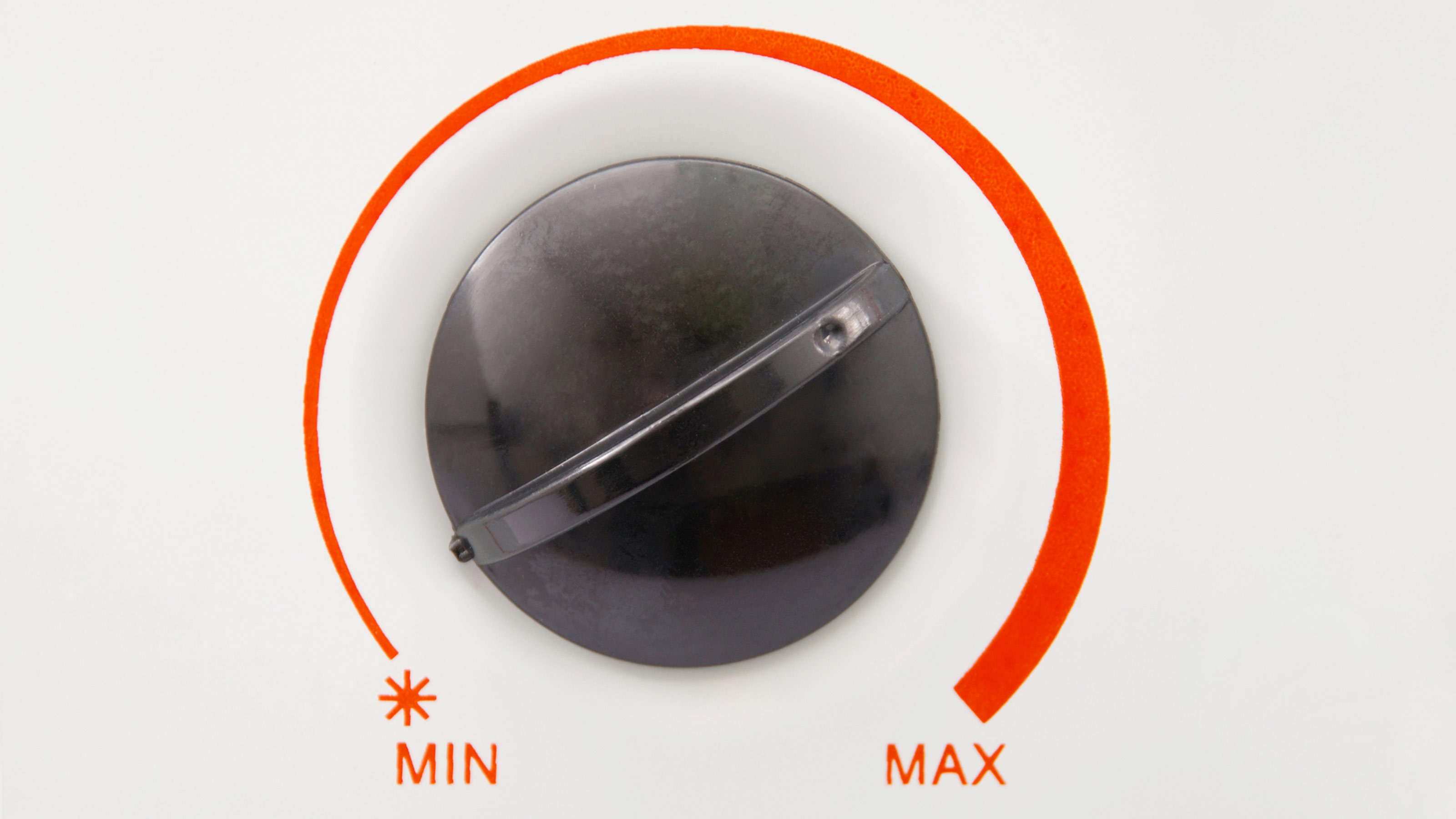Could Now Be the Right Time to Dial Down Your Investment Risk?
The stock market’s stunning turn of events recently could present a golden opportunity to rebalance your portfolio.


After the stock market began its plunge in mid-March, investors hurried to find out if their portfolios could withstand the steep drop and what to do next. Now, several weeks later, we’ve all exhaled as the market has gradually recovered.
Fortunately, this scenario may benefit many investors, presenting them with a golden opportunity to re-allocate their portfolios to match their risk tolerance. This is particularly true for those who gradually increased their allocation to equities in recent years and then saw their portfolios collapse in March. Now, with the Standard & Poor’s 500 index only off 8.4% from its all-time highs as of June 30, it’s time for all investors to examine their tolerance for risk without having an uncomfortable discussion as the market is plummeting.
Historical Figures Reveal a Surprising Sweet Spot
This opportunity exists even as some investors wonder if they should double down on the markets’ recovery. They are concerned if they don’t have enough stocks in their portfolio, or the right stocks, they will miss out if the market races to a new record in the next 12 months.
From just $107.88 $24.99 for Kiplinger Personal Finance
Become a smarter, better informed investor. Subscribe from just $107.88 $24.99, plus get up to 4 Special Issues

Sign up for Kiplinger’s Free Newsletters
Profit and prosper with the best of expert advice on investing, taxes, retirement, personal finance and more - straight to your e-mail.
Profit and prosper with the best of expert advice - straight to your e-mail.
But history shows us there is a “sweet spot” in any portfolio when we consider the trade-off between risk and reward. It may seem hard to believe, but it tends to be a portfolio that consists of between 50% and 60% stocks.
As an investor’s portfolio takes on more risk, with stocks making up 70%, 80% or more, returns can certainly increase as the market moves higher. But because their portfolio becomes less and less diverse, the investor takes on significantly more risk. And that’s what caused panic in some people a couple of months back.
A Clear Example of Risk vs. Return
A simple chart comparing the performance of three portfolios helps demonstrate the often-disproportionate relationship between risk and return. The chart below shows the performance of three different portfolios over a 5-, 10- and 15-year period.
It’s important to note that while the portfolio consisting of 75% stocks performed slightly better than those with only 60%, the difference is small. At the same time, the stock-heavy portfolio leaves little margin for error during a sharp downturn like the one we just experienced.
Over a 15-year period, it is no surprise that when looking at the rolling period with the best-case scenario, the portfolio with 75% stocks had the best returns, at 16.8%. Surprisingly, the more conservative portfolios – those with a 60/40 and 40/60 mix of stocks and bonds, were not far behind. The former gained 15.6% and the latter 13.9%. (Note: To see the full chart, you may need to use the scroll arrow. Depending on your device, it may be easier to view the full chart here.)
| Header Cell - Column 0 | Header Cell - Column 1 | Header Cell - Column 2 | Header Cell - Column 3 | Header Cell - Column 4 | Header Cell - Column 5 | Header Cell - Column 6 | Header Cell - Column 7 | Header Cell - Column 8 | Header Cell - Column 9 |
|---|---|---|---|---|---|---|---|---|---|
| Historic Rolling Returns* | |||||||||
| 75% Stocks/25% Bonds | 60% Stocks/40% Bonds | 40% Stocks/60% Bonds | |||||||
| 43.08% | 36.46% | 26.71% | |||||||
| Rolling Period | Best | Average | Worst | Best | Average | Worst | Best | Average | Worst |
| 5 Years | 27.55% | 10.01% | -3.34% | 24.92% | 9.53% | -1.60% | 24.73% | 8.81% | 0.67% |
| 10 Years | 17.47% | 9.75% | -0.68% | 16.57% | 9.40% | 0.81% | 15.59% | 8.83% | 2.70% |
| 15 Years | 16.79% | 10.01% | 3.76% | 15.57% | 9.66% | 4.13% | 13.89% | 9.09% | 4.51% |
| *information based on Ibbotson Large Cap Stocks and Corporate Bond historic performance from 1969 to present |
However, proper retirement planning is not based on best-case scenarios. Looking at the same portfolios, the average 15-year rolling period showed annual gains of 10%, 9.7% and 9.1%, respectively. Again, the portfolio consisting of 75% stocks and 25% bonds performed the best, but the difference between the three portfolios is quite slim.
This becomes especially important for investors with a shorter time horizon investing in today’s relatively expensive market. An expensive market does not necessitate a crash, but it does heighten the risk of one. Looking at the worst rolling periods tells us that even over 10- to 15-year periods, conservative portfolios may hold up better than aggressive ones.
What This Means for Investors Today
So, for those investors who believe now is the time to move a high percentage of their portfolio into stocks, you may want to think again. Our lesson from the data is simple: Do not make the mistake of assuming that a much riskier investment portfolio has the potential for a significantly higher return, even over a long period. There is no need to maintain a high-risk portfolio because of fear of leaving money on the table. The real-world differences in rates of return are slim, and in many circumstances can be negative.
We don’t know what level of returns the stock market will produce going forward. However, we know the relationship between risk and reward holds remarkably stable over time and market conditions.
If the events of the last two months caused you to lose sleep or frantically call your adviser to make a change, now is your chance to make thoughtful changes to your allocation. At some point, there will be another event that will have an unfavorable financial impact. Will you be prepared when it happens?
For now, markets have made a strong step toward recovery, but the road forward is increasingly uncertain. If another crash occurs, no investor wants to find out they’ve taken on too much risk after another 30% or more drop; the next recovery may not come so quickly. Remember the goal is financial independence, not capturing every single penny of return at the expense of your mental health.
The only benchmark you need to meet is the retirement date circled on your calendar.
Profit and prosper with the best of Kiplinger's advice on investing, taxes, retirement, personal finance and much more. Delivered daily. Enter your email in the box and click Sign Me Up.

Herman Freitag is an associate wealth adviser with McGill Advisors, a Division of CI Brightworth. Prior to joining McGill Advisors he was with a national investment firm serving high-net-worth clients for four years. Previously he had worked for the private banking and retail arms of a national bank for four years. He earned his CERTIFIED FINANCIAL PLANNER™ professional certification in 2017. Herman is a native of New Orleans.
-
 AI Stocks Lead Nasdaq's 398-Point Nosedive: Stock Market Today
AI Stocks Lead Nasdaq's 398-Point Nosedive: Stock Market TodayThe major stock market indexes do not yet reflect the bullish tendencies of sector rotation and broadening participation.
-
 Top Tech Gifts to Grab at Walmart Before Christmas
Top Tech Gifts to Grab at Walmart Before ChristmasBig savings on Apple, Bose, HP, Vizio and more while there's still time to shop.
-
 AI Appliances Aren’t Exciting Buyers…Yet
AI Appliances Aren’t Exciting Buyers…YetThe Kiplinger Letter Artificial intelligence is being embedded into all sorts of appliances. Now sellers need to get customers to care about AI-powered laundry.
-
 Quick Question: Are You Planning for a 20-Year Retirement or a 30-Year Retirement?
Quick Question: Are You Planning for a 20-Year Retirement or a 30-Year Retirement?You probably should be planning for a much longer retirement than you are. To avoid running out of retirement savings, you really need to make a plan.
-
 Don't Get Caught by the Medicare Tax Torpedo: A Retirement Expert's Tips to Steer Clear
Don't Get Caught by the Medicare Tax Torpedo: A Retirement Expert's Tips to Steer ClearBetter beware, because if you go even $1 over an important income threshold, your Medicare premiums could rise exponentially due to IRMAA surcharges.
-
 I'm an Insurance Pro: Going Without Life Insurance Is Like Driving Without a Seat Belt Because You Don't Plan to Crash
I'm an Insurance Pro: Going Without Life Insurance Is Like Driving Without a Seat Belt Because You Don't Plan to CrashLife insurance is that boring-but-crucial thing you really need to get now so that your family doesn't have to launch a GoFundMe when you're gone.
-
 I'm a Tax Attorney: These Are the Year-End Tax Moves You Can't Afford to Miss
I'm a Tax Attorney: These Are the Year-End Tax Moves You Can't Afford to MissDon't miss out on this prime time to maximize contributions to your retirement accounts, do Roth conversions and capture investment gains.
-
 I'm an Investment Adviser: This Is the Tax Diversification Strategy You Need for Your Retirement Income
I'm an Investment Adviser: This Is the Tax Diversification Strategy You Need for Your Retirement IncomeSpreading savings across three "tax buckets" — pretax, Roth and taxable — can help give retirees the flexibility to control when and how much taxes they pay.
-
 Could an Annuity Be Your Retirement Safety Net? 4 Key Considerations
Could an Annuity Be Your Retirement Safety Net? 4 Key ConsiderationsMore people are considering annuities to achieve tax-deferred growth and guaranteed income, but deciding if they are right for you depends on these key factors.
-
 I'm a Financial Pro: Older Taxpayers Really Won't Want to Miss Out on This Hefty (Temporary) Tax Break
I'm a Financial Pro: Older Taxpayers Really Won't Want to Miss Out on This Hefty (Temporary) Tax BreakIf you're age 65 or older, you can claim a "bonus" tax deduction of up to $6,000 through 2028 that can be stacked on top of other deductions.
-
 Meet the World's Unluckiest — Not to Mention Entitled — Porch Pirate
Meet the World's Unluckiest — Not to Mention Entitled — Porch PirateThis teen swiped a booby-trapped package that showered him with glitter, and then he hurt his wrist while fleeing. This is why no lawyer will represent him.